• Premier Pro Series vocal microphone delivers excellent gain
before feedback and outstanding stage presence
• Hi-ENERGY
®
neodymium magnet for improved output and
transient response
• Extended frequency response for optimal vocal reproduction
• Two-stage ball-type screen reduces wind noise and “popping”
during close use
• Corrosion-resistant contacts from gold-plated XLRM-type
connectors
• Superior internal shock mounting reduces handling noise
• Rugged design and construction for reliable performance
• Hypercardioid polar pattern reduces pickup of sounds from the
sides and rear, improving isolation of desired sound source
Output from the microphone’s XLRM-type connector is low
impedance (Lo-Z) balanced. The signal appears across Pins 2 and
3; Pin 1 is ground (shield). Output phase is “Pin 2 hot” – positive
acoustic pressure produces positive voltage at Pin 2.
Plug Type Ground Audio “+” Audio “-”
XLR Pin 1 Pin 2 Pin 3
1
/
4
" “TRS” Sleeve Tip Ring
1
/
4
" Sleeve Tip Sleeve
To avoid phase cancellation and poor sound, all mic cables must be
wired consistently: Pin 1-to-Pin 1, etc. For a high-impedance (Hi-Z)
mic input, connect a Lo-Z balanced cable to a Hi-Z matching
transformer (A-T CP8201 or equal) at the equipment input.
When using the PRO 61 in settings with a stage monitor speaker,
the speaker should be located 135° off axis (45° off the rear of the
microphone). This placement, in conjunction with the microphone’s
uniform hypercardioid pickup pattern, will virtually eliminate the
possibility of undesired audio feedback.
Take care to keep foreign particles from entering the windscreen.
An accumulation of iron or steel filings on the diaphragm, and/or
foreign material in the windscreen’s mesh surface, can degrade
performance.
Audio-Technica U.S., Inc., 1221 Commerce Drive, Stow, Ohio 44224
Audio-Technica Limited, Old Lane, Leeds LS11 8AG England
www.audio-technica.com
3893-00200 P51682-EN ©2004 Audio-Technica U.S., Inc. Printed in Taiwan
PRO 61 HYPERCARDIOID DYNAMIC MICROPHONE
SCALE IS 5 DECIBELS PER DIVISION
Polar Pattern
200 Hz
LEGEND
5 kHz
1 kHz
8 kHz
240
180
210
270
300
330
0
150
120
90
30
60
12" or more on axis
100
50
200
LEGEND
10k
5k
1k
500
2k
20k
Frequency in Hertz
Frequency Response
Response in dB
10 dB
PRO 61 SPECIFICATIONS
†
ELEMENT Dynamic
POLAR PATTERN Hypercardioid
FREQUENCY RESPONSE 70-16,000 Hz
OPEN CIRCUIT SENSITIVITY –55 dB (1.7 mV) re 1V at 1 Pa*
IMPEDANCE 300 ohms
WEIGHT (less cable and accessories) 11.8 oz (335 g)
DIMENSIONS 7.56" (192.0 mm) long,
2.07" (52.6 mm) head diameter
OUTPUT CONNECTOR Integral 3-pin XLRM-type
CABLE 15.0' (4.5 m) cable with XLRF-type
connector at microphone end,
XLRM-type connector at equipment
end
ACCESSORIES FURNISHED AT8470 Quiet-Flex
™
stand clamp for
5
/
8
"-27 threaded stands;
5
/
8
"-27 to
3
/
8
"-16 threaded adapter; soft
protective pouch
†
In the interest of standards development, A.T.U.S. offers full details on its test
methods to other industry professionals on request.
*1 Pascal = 10 dynes/cm
2
= 10 microbars = 94 dB SPL
Specifications are subject to change without notice.

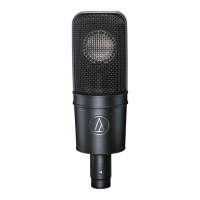
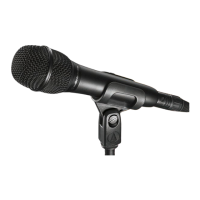
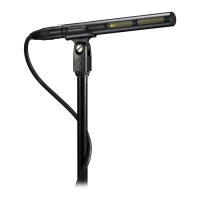




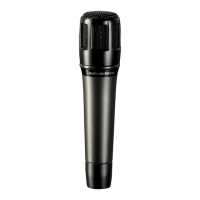

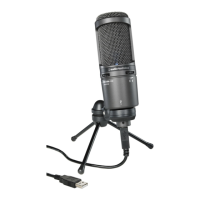
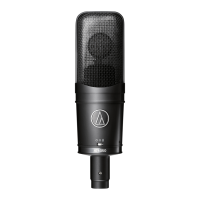
